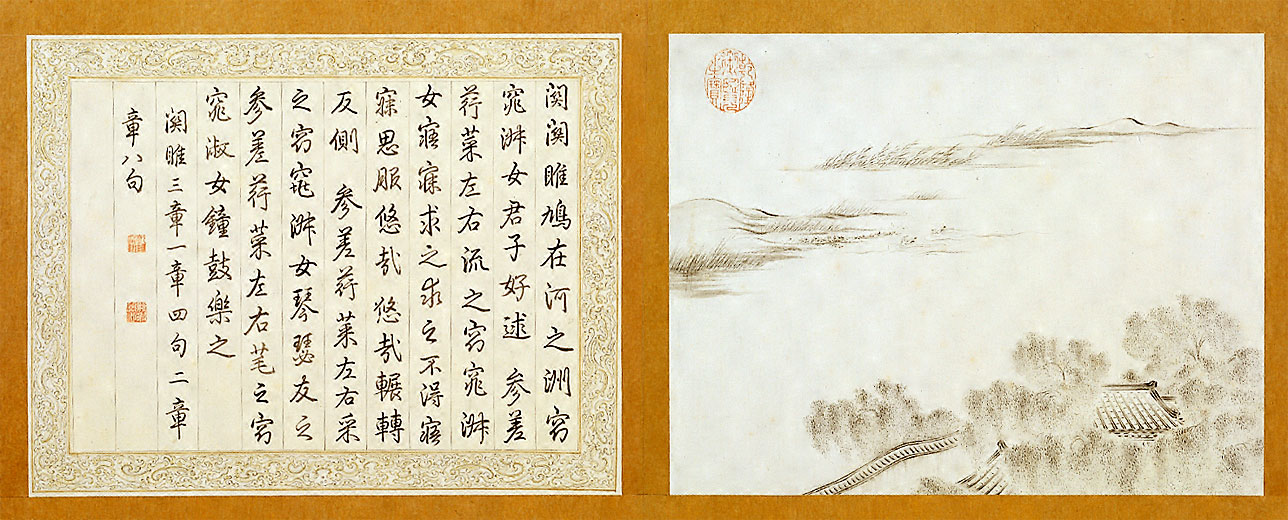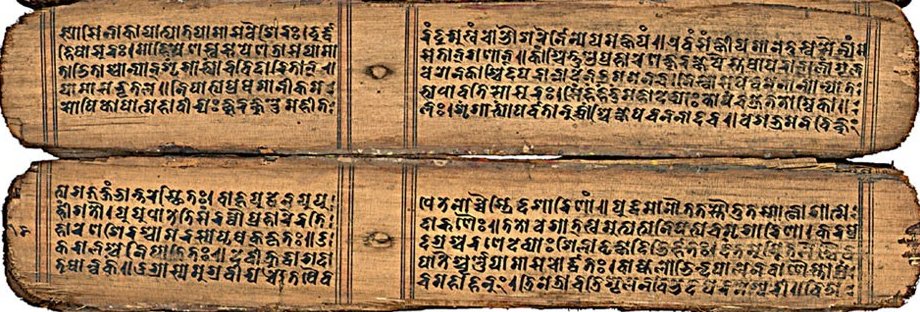|
Tocharian Alphabet
The Tocharian script, also known as Central Asian slanting Gupta script or North Turkestan Brāhmī, is an abugida which uses a system of diacritical marks to associate vowels with consonant symbols. Part of the Brahmic scripts, it is a version of the Indian Brahmi script. It is used to write the Central Asian Indo-European Tocharian languages, mostly from the 8th century (with a few earlier ones, probably as early as AD 300) that were written on palm leaves, wooden tablets and Chinese paper, preserved by the extremely dry climate of the Tarim Basin. Samples of the language have been discovered at sites in Kucha and Karasahr, including many mural inscriptions. Mistakenly identifying the speakers of this language with the '' Tokharoi'' people of Tokharistan (the Bactria of the Greeks), early authors called these languages "Tocharian". This naming has remained, although the names ''Agnean'' and ''Kuchean'' have been proposed as a replacement. Tocharian A and B are not mutually in ... [...More Info...] [...Related Items...] OR: [Wikipedia] [Google] [Baidu] |
Abugida
An abugida (; from Geʽez: , )sometimes also called alphasyllabary, neosyllabary, or pseudo-alphabetis a segmental Writing systems#Segmental writing system, writing system in which consonant–vowel sequences are written as units; each unit is based on a consonant letter, and vowel notation is secondary, similar to a diacritical mark. This contrasts with a full alphabet, in which vowels have status equal to consonants, and with an abjad, in which vowel marking is absent, Abjad#Impure abjads, partial, or optional – in less formal contexts, all three types of the script may be termed "alphabets". The terms also contrast them with a syllabary, in which a single symbol denotes the combination of one consonant and one vowel. Related concepts were introduced independently in 1948 by James Germain Février (using the term ) and David Diringer (using the term ''semisyllabary''), then in 1959 by Fred Householder (introducing the term ''pseudo-alphabet''). The Ethiopian Semitic langu ... [...More Info...] [...Related Items...] OR: [Wikipedia] [Google] [Baidu] |
Brāhmī Script
Brahmi ( ; ; ISO 15919, ISO: ''Brāhmī'') is a writing system from ancient India. "Until the late nineteenth century, the script of the Aśokan (non-Kharosthi) inscriptions and its immediate derivatives was referred to by various names such as 'lath' or 'Lat', 'Southern Aśokan', 'Indian Pali', 'Mauryan', and so on. The application to it of the name Brahmi [''sc. lipi''], which stands at the head of the Buddhist and Jaina script lists, was first suggested by T[errien] de Lacouperie, who noted that in the Chinese Buddhist encyclopedia ''Fa yiian chu lin'' the scripts whose names corresponded to the Brahmi and Kharosthi of the ''Lalitavistara'' are described as written from left to right and from right to left, respectively. He therefore suggested that the name Brahmi should refer to the left-to-right 'Indo-Pali' script of the Aśokan pillar inscriptions, and Kharosthi to the right-to-left 'Bactro-Pali' script of the rock inscriptions from the northwest." that appeared as a fully ... [...More Info...] [...Related Items...] OR: [Wikipedia] [Google] [Baidu] |
Standard Mandarin
Standard Chinese ( zh, s=现代标准汉语, t=現代標準漢語, p=Xiàndài biāozhǔn hànyǔ, l=modern standard Han speech) is a modern Standard language, standard form of Mandarin Chinese that was first codified during the Republic of China (1912–1949), republican era (1912–1949). It is designated as the Languages of China, official language of mainland China and a major language in the United Nations languages, United Nations, Languages of Singapore, Singapore, and Languages of Taiwan, Taiwan. It is largely based on the Beijing dialect. Standard Chinese is a pluricentric language with local standards in mainland China, Taiwan and Singapore that mainly differ in their lexicon. Hong Kong written Chinese, used for formal written communication in Hong Kong and Macau, is a form of Standard Chinese that is read aloud with the Cantonese reading of characters. Like other Sinitic languages, Standard Chinese is a tone (linguistics), tonal language with topic-prominent langua ... [...More Info...] [...Related Items...] OR: [Wikipedia] [Google] [Baidu] |
Classical Chinese
Classical Chinese is the language in which the classics of Chinese literature were written, from . For millennia thereafter, the written Chinese used in these works was imitated and iterated upon by scholars in a form now called Literary Chinese, which was used for almost all formal writing in China until the early 20th century. Each written character corresponds to a single spoken syllable, and almost always to a single independent word. As a result, the characteristic style of the language is comparatively terse. Starting in the 2nd century CE, use of Literary Chinese spread to the countries surrounding China, including Vietnam, Korea, Japan, and the Ryukyu Islands, where it represented the only known form of writing. Literary Chinese was adopted as the language of civil administration in these countries, creating what is known as the Sinosphere. Each additionally developed systems of readings and annotations that enabled non-Chinese speakers to interpret Literary ... [...More Info...] [...Related Items...] OR: [Wikipedia] [Google] [Baidu] |
Liturgical Language
A sacred language, liturgical language or holy language is a language that is cultivated and used primarily for religious reasons (like church service) by people who speak another, primary language in their daily lives. Some religions, or parts of them, regard the language of their sacred texts as in itself sacred. These include Ecclesiastical Latin in Roman Catholicism, Hebrew in Judaism, Arabic in Islam, Avestan in Zoroastrianism, Sanskrit in Hinduism, and Punjabi in Sikhism. By contrast Buddhism and Christian denominations outside of Catholicism do not generally regard their sacred languages as sacred in themselves. Concept A sacred language is often the language which was spoken and written in the society in which a religion's sacred texts were first set down; these texts thereafter become fixed and holy, remaining frozen and immune to later linguistic developments. (An exception to this is Lucumí, a ritual lexicon of the Cuban strain of the Santería religion, with no ... [...More Info...] [...Related Items...] OR: [Wikipedia] [Google] [Baidu] |
Mutually Intelligible
In linguistics, mutual intelligibility is a relationship between different but related language varieties in which speakers of the different varieties can readily understand each other without prior familiarity or special effort. Mutual intelligibility is sometimes used to distinguish languages from dialects, although sociolinguistic factors are often also used. Intelligibility between varieties can be asymmetric; that is, speakers of one variety may be able to better understand another than vice versa. An example of this is the case between Afrikaans and Dutch. It is generally easier for Dutch speakers to understand Afrikaans than for Afrikaans speakers to understand Dutch. In a dialect continuum, neighbouring varieties are mutually intelligible, but differences mount with distance, so that more widely separated varieties may not be mutually intelligible. Intelligibility can be partial, as is the case with Azerbaijani and Turkish, or significant, as is the case with Bulg ... [...More Info...] [...Related Items...] OR: [Wikipedia] [Google] [Baidu] |
Bactria
Bactria (; Bactrian language, Bactrian: , ), or Bactriana, was an ancient Iranian peoples, Iranian civilization in Central Asia based in the area south of the Oxus River (modern Amu Darya) and north of the mountains of the Hindu Kush, an area within the north of modern Afghanistan, Tajikistan and Uzbekistan. Bactria was strategically located south of Sogdia and the western part of the Pamir Mountains. The extensive mountain ranges acted as protective "walls" on three sides, with the Pamir on the north and the Hindu Kush on south forming a junction with the Karakoram, Karakoram range towards the east. Called "beautiful Bactria, crowned with flags" by the Avesta, the region is considered, in the Zoroastrianism, Zoroastrian faith, to be one of the "Avestan geography, sixteen perfect Iranian lands" that the supreme deity, Ahura Mazda, had created. It was once a small and independent kingdom struggling to exist against nomadic Turya (Avesta), Turanians. One of the early centres of ... [...More Info...] [...Related Items...] OR: [Wikipedia] [Google] [Baidu] |
Tokharistan
Tokharistan (formed from "Tokhara" and the suffix ''-stan'' meaning "place of" in Persian) is a historical name used by Islamic sources in the early Middle Ages to refer to the area which was known as Bactria in Ancient Greek sources. By the 6th century CE, Tokharistan came under rule of the First Turkic Khaganate, and in the 7th and 8th centuries, it was incorporated into the Tang dynasty, administered by the Protectorate General to Pacify the West. Today, Tokharistan is fragmented between Afghanistan, Uzbekistan and Tajikistan. Names Several languages have used variations of the word "Tokhara" to designate the region: * Tokharistan may appear in ancient Indian sources as the Kingdom of Tushara, to the northwest of the Indian subcontinent. "Tushara" is the Sanskrit word for "snowy" "frigid", and is known to have been used to designate the country of Tukhara. In Sanskrit, it became तुखार (Tukhāra). * In ancient Greek, the name was Tokharoi ( ) or Thaguroi. * Tocha ... [...More Info...] [...Related Items...] OR: [Wikipedia] [Google] [Baidu] |
Karasahr
Karasahr or Karashar (), which was originally known in the Tocharian languages as ''Ārśi'' (or Arshi), Qarašähär, or Agni or the Chinese derivative Yanqi ( zh, s=焉耆, p=Yānqí, w=Yen-ch'i), is an ancient town on the Silk Road and the capital of Yanqi Hui Autonomous County in the Bayingolin Mongol Autonomous Prefecture, Xinjiang. it had a population of 29,000,www.xzqh.org growing to 31,773 people in 2006; 16,032 persons of which were Han Chinese, Han, 7781 people Hui people, Hui, 7154 people Uyghurs, Uyghur, 628 Mongols, Mongol and 178 other ethnicities and an agricultural population of 1078 people. The town has a strategic location, being located on the Kaidu River (known in ancient times as the Liusha), China National Highway 314 and the Southern Xinjiang railway, Southern Xinjiang Railway and is an important material distribution c ... [...More Info...] [...Related Items...] OR: [Wikipedia] [Google] [Baidu] |
Kucha
Kucha or Kuche (also: ''Kuçar'', ''Kuchar''; , Кучар; zh, t= 龜茲, p=Qiūcí, zh, t= 庫車, p=Kùchē; ) was an ancient Buddhist kingdom located on the branch of the Silk Road that ran along the northern edge of what is now the Taklamakan Desert in the Tarim Basin and south of the Muzat River. The former area of Kucha now lies in present-day Aksu Prefecture, Xinjiang, China. Kuqa town is the county seat of Aksu Prefecture's Kuqa County. Its population was given as 74,632 in 1990. Etymology The history of toponyms for modern Kucha remains somewhat problematic; however, it is clear that Kucha (''Kuchar'', in Turkic languages) and ''Kuché'' (modern Chinese)Elias (1895): ''The Tarikh-i-Rashidi of Mirza Muhammad Haidar, Dughlát: A History of the Moghuls of Central Asia. An English Version Edited, with Commentary, Notes, and Map by N. Elias''. Translation by E. Denison Ross. London. Sampson, Low, Marston and Company Ltd.), p. 124, n. 1., ''et passim'' both co ... [...More Info...] [...Related Items...] OR: [Wikipedia] [Google] [Baidu] |
Tarim Basin
The Tarim Basin is an endorheic basin in Xinjiang, Northwestern China occupying an area of about and one of the largest basins in Northwest China.Chen, Yaning, et al. "Regional climate change and its effects on river runoff in the Tarim Basin, China." Hydrological Processes 20.10 (2006): 2207–2216.online 426 KB) Located in China's Xinjiang region, it is sometimes used synonymously to refer to the southern half of the province, that is, Southern Xinjiang or Nanjiang (), as opposed to the northern half of the province known as Dzungaria or Beijiang. Its northern boundary is the Tian Shan mountain range and its southern boundary is the Kunlun Mountains on the edge of the Tibetan Plateau. The Taklamakan Desert dominates much of the basin. The historical Uyghur name for the Tarim Basin is Altishahr (Uyghur language, Traditional Uyghur: , ), which means 'six cities' in Uyghur language, Uyghur. The region was also called ''Little Bukhara'' or ''Little Bukharia''. Geography and relation ... [...More Info...] [...Related Items...] OR: [Wikipedia] [Google] [Baidu] |







